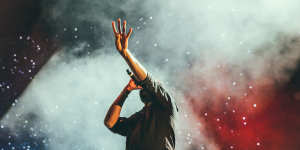No insight without art. Embracing the mystery at the heart of qual.
A version of this article was featured in Quirk's Media
Research is a blend of the best of both science and art. We strive for reasoned explanation and representational accuracy while also embracing the power of emotional engagement, creativity, and beauty. While the science is well documented, the art is often minimized or ignored altogether. By embracing the artistic elements of qual, we can tap into a far deeper realm of curiosity, and in turn, unlock nuances of human behavior, desires, and motivations. It’s just as important to be creative as it is to be analytical, passionate as well as reasoned, to feel as well as to think, and to arouse open-hearted curiosity while offering explanations.
Qual research is part science and mostly art. In a quant-based world where humanity is stripped from data in service to efficiency, genuine connections with people are more critical than ever, understanding the human aspect of consumer behavior - the ‘inner world’ - is the differentiating factor that can set brands apart.
Art feeds off intuition, messiness, and beauty in the every day – the way people live, relate, love, and consume. Careful attentiveness is at the heart of artistic-analytical inquiry, and this attentiveness excavates the inner worlds of consumers, not just in what they consume but in what moves them at their core.
The very best qualitative research goes beyond checking boxes or validating hypotheses. It's about forging a deep connection with participants and tapping into their soul. It encourages vulnerability, forces empathy, and gifts us with a shift in perspective while seeking out nuance. In return, it consistently delivers those "ah-ha" moments for our clients – the details of the unexpected, a level of understanding other brands and agencies may not access, and the unique directions only an artistic-analytical mind can illuminate.
Albert Einstein once said, “The most beautiful thing we can experience is the mysterious. It is the source of all true art and science. He to whom this emotion is a stranger, who can no longer pause to wonder and stand in rapt awe, is as good as dead: his eyes are closed.”
Understanding humans’ mysteriousness allows us to get beyond what we (and our clients) expect to see. We open our hearts and minds to the possibility of surprise, to understand our respondents and be changed by them. This is where the magic happens. This is where research becomes art.
But how do we access this level of artistry? We offer a few tips:
- Begin with empathy. Empathy is at the heart of the artistic-analytical mind. As early as the briefing stage, take a moment to think about and feel with the humans you’re trying to reach. Put yourselves in their shoes and imagine creatively where their emotional inner worlds might lead them. Identify the depth of your own humanity, and the questions that feel most meaningful will arise, engaging respondents in a level of self-inquiry oriented in the fusion of emotion, thought, and action.
- Engage the senses. Core to empathy is engagement with the sensory. The senses form the foundation of both creating and experiencing art. Our senses – how we see, touch, hear, taste, and smell – may not all seem relevant in qual research, but putting our respondents in a sensory state builds richness, asking them to embody in a fuller way what it means to encounter a brand, product, or concept. Attune yourself with the sounds, movements, tones, and energy in front of you. This is where it’s possible to notice the nuance, appreciate the detail, and paint a picture that might have otherwise been predictable and dull.
- Embrace vulnerability. Humans simultaneously yearn to be vulnerable and are terrified by vulnerability. Art asks humans to be vulnerable, to feel open-heartedly, and to take risks in expressing their fears and desires. In research, the environment of private messaging creates an open, safe space to express sensitivity, to engage in play that takes respondents out of their comfort zone, and to express themselves without fear of offending others or getting the words wrong. Be vulnerable in crafting the brief and research design and respondents will trust your intentions and curiosity.
- Be comfortable with chaos. Great research animates the art of detail and nuance. Nuance might be found in surprising places. It might be in the minority opinions or it might emerge from that one final probing question. The artistic-analytical mind rejects cliche, and nuance is the enemy of cliche. Attend to the tiniest details that might be missed in a more surface-level research design or a cursory analysis. Read between the lines for tone, word choice, and emotion beneath each response. These carefully unearthed details might end up being the most inspiring and fruitful directions for strategy.
- Play with old assumptions and conventions. The best art emerges when our assumptions are challenged. In research, we hope that our hypotheses are validated, and often they are, but an openness to being challenged and to being proven wrong creates the possibility for findings that push strategy in new and unexpected directions. Turn your assumptions upside down. Look at them askew. Take direction from the places where respondents reaffirm and deny what you expect.


